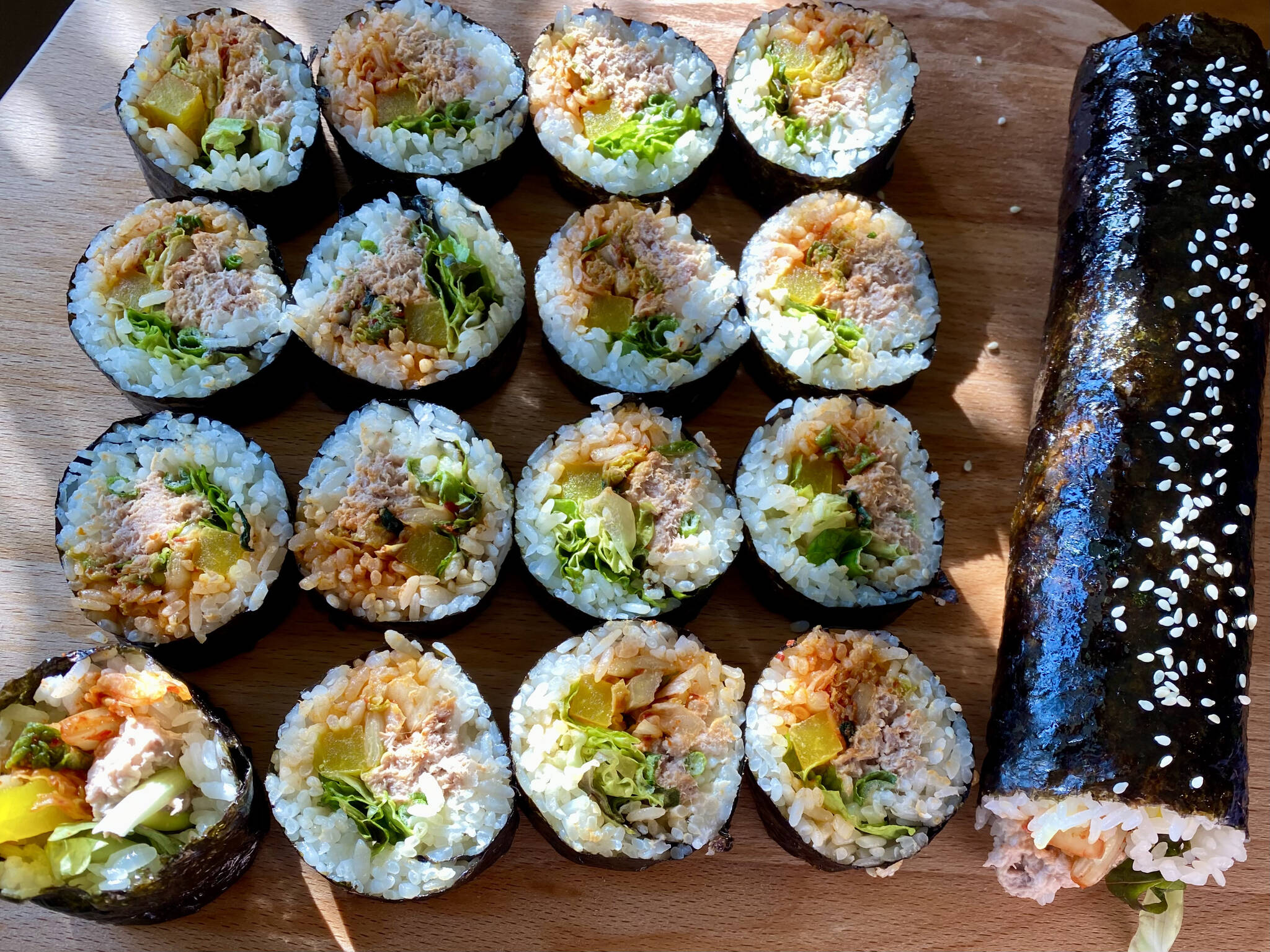We took our boy to Anchorage this past weekend for his first trip to the Alaska Zoo. My sister and her family joined us for our afternoon adventure in the chilly spring air and mud.
Wrangling four young children is no easy task, but our animal friends surprised and delighted them at every turn to keep them smiling. They giggled at grizzlies chasing ravens, a gray wolf came right to the fence to give them a closer look at her giant paws and soulful eyes, and the tigers yawned and stretched and snuggled each other like our tiny tigers do at home. When all four little noses were cold, we headed to the playground for one more trip down the slide and a few pictures to remember this happy rite of passage for our sweet Alaskan child.
Day trips like these require special food preparation. Americans pack sandwiches and cheese sticks, but in Korea they pack kimbap. It is a staple of every school picnic day and hiking trip for Korean families because they are so portable and easy to eat with your hands — no need to pack plates or cutlery. I made tuna kimchi kimbap, a classic, beloved combination that calls for staple pantry ingredients that you might already have. I included some yellow pickled radish I got from the Korean market to add a little sweetness, but it is certainly not necessary, and some julienned carrot is an excellent substitution.
Ingredients for 4 rolls: (a snack for a crowd or lunch for 4)
4 cups cooked sticky rice
2 tablespoons sesame oil
1 teaspoon salt
2 cans tuna, drained
1/3 cup mayonnaise
1 cup cabbage kimchi, chopped
4 stalks green onion, sliced lengthwise a few times
About 2 cups shredded lettuce
1 cup julienned carrot
4 sheets sushi nori
Directions:
Cook your rice according to instructions.
Move the rice to a large mixing bowl, pour on the sesame oil and salt and mix thoroughly. Set aside.
Mix the tuna and mayo in another bowl until a homogeneous paste forms. You don’t want any chunks of tuna in the mix because it can cause the rolls to fall apart.
Wash and cut the lettuce, carrot and green onion and keep them separated.
To chop the kimchi, I recommend keeping the kimchi in a bowl and using scissors instead of chopping flat on a cutting board. The kimchi juice is likely to stain your cutting board and it definitely will make a mess.
When all your fillings are prepared, you´re ready to assemble.
Your nori sheet has one shiny side and one rough side — lay your sheet shiny side down with the shorter end facing you.
Take 1 cup of cooked rice and spread it in a thin, even layer over the nori, making sure to go all the way to the edges, and leaving a 1-inch gap at the top. This gap will be important for sealing the roll.
Line up your fillings one at a time, starting about an inch up from the bottom, in this order: green onion, tuna, kimchi, carrot, then lettuce. Each ingredient should extend all the way to each side and should touch but not overlap the other ingredients.
Using your fingers, gently lift the roll from the bottom and roll up and over all the ingredients to the top. You can use a bamboo mat if you have one, but it is not necessary. The bottom edge of the roll should meet the top edge of the lettuce with a small strip of rice and the gap of plain nori above it.
Take a little water (or a couple grains of sticky rice) across the top of the sheet and continue rolling to seal. Press gently to compress the ingredients and further seal the roll.
Brush the roll with a little sesame oil to make it shiny and to keep the nori from drying out and cracking.
Slice into bite sized pieces or leave whole to eat like a burrito. Wrap tightly in plastic before transporting.

